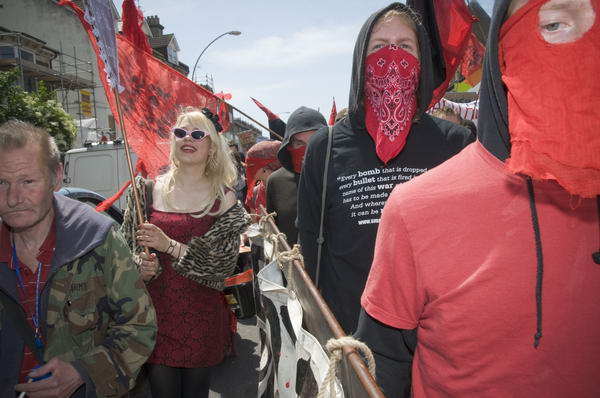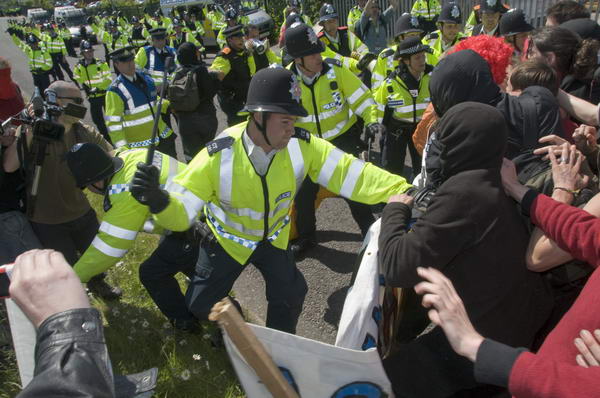The second instalment of a short series of tips on digital images – see also Better Digital 1
Image size and Resolution
Image size is measured in pixels. When supplying images you will seldom if ever be told what size is needed. A rough guide:
· Full page 3000×2000 px or larger
· Half page 2400x1800px or larger
· Quarter page 1800x1200px or larger
Always set the resolution of images at 300 dpi unless specifically asked to use another figure. Most editors etc have no idea what resolution means, and few seem to know it can readily be changed. Much of the confusion comes about because in Photoshop the ‘Image Size’ dialogue box can be used to do two rather different things. It can change the image resolution and it can ‘resample’ your images. Resampling alters the number of pixels in the image, making it larger or smaller (with photographs you will always want to use either ‘bicubic’ or ‘smooth bicubic’ resampling in Photoshop, although other software offers algorithms that may at times give better results.)
Changing resolution doesn’t actually alter your images, but simply changes a few bytes in the file that contain the resolution figure, which is an instruction to the output device about how to work out the size to make a print. Make sure you un-check the resample box in Photoshop when changing resolution – or you will also resample and thus alter your image size.
Various programs claim to work magic when resizing your images, and over the years I’ve tested and reviewed most of them, usually getting a free copy. My conclusion was that for any normal purposes you don’t need them, but that some, particularly SizeFixer will give a better result if you need to blow up a small image for a giant print – and have a very long time to wait for the result.
Image Quality and Format
Unless specifically asked for TIFF files you can supply JPEG. If awkward customers particularly want TIFFs you will find no problem in converting high quality jpegs to tiff format in Photoshop and sending these!
For supply on CD I would normally use Jpeg quality 11 in Photoshop or 92% in Lightroom
For e-mail, I cut down the file size depending on the page size requested as above and supply at quality 9 or 10.
TIFFs should be supplied uncompressed, in PC byte order. All files should have the appropriate colour profile, sRGB or Adobe RGB, embedded in the file.
Sharpening
Images for reproduction should normally be supplied unsharpened, or only with very slight sharpening (use unsharp mask or smart sharpening or a specialised sharpening plug-in – my favourite is Focalblade. In Lightroom I always apply ) There should be no visible sharpening artefacts.
You should leave it to the printer (or whoever is preparing work for the press) to apply appropriate sharpening for the printer and output size.
If supplying images for presentations or web use, sharpen these appropriately for use on screen. Again there should be no visible artefacts.
Black and White images
Black and white images are also usually best supplied as RGB files, using the appropriate colour profile, sRGB or Adobe RGB, embedded in the file.
If you know your colour images are going to be used as black and white, it is best to do the conversion yourself. Photoshop offers various ways to do this, and one of the simplest that gives you decent control is the ‘Channel Mixer.’ Lightroom and CS3 have a superior ‘Grayscale Mixer’ and plugins such as B/W Styler give ease of use and special effects as well as similar control for users of earlier versions of Photoshop.
If your black and white images are to be printed as colour, you can produce richer results by the use of small amounts of colour in highlights and shadows – as we used to produce by selenium and other toning methods.
CMYK
Normal colour printing uses the 4 inks Cyan, Magenta, Yellow and blacK, and the printer needs images that are separated into these four colours. However this is a highly technical process and depends on the inks, printer and paper, and it it usually best to supply files as Adobe RGB (or possibly ECI-RGB for European printers.)
If you have to convert to CMYK, you should try to find out from the printer the appropriate CMYK colour space to use, such as SWOP Coated V2 CMYK.
Metadata
Never let any file leave your hands without appropriate metadata. The proposed ‘orphan works’ legislation makes it even more essential to ensure as a minimum that your name, copyright details and contact details are included.
Metadata includes both EXIF data and IPTC data. Cameras write EXIF data into the file on every image that you take, but scanned images don’t have it. Some cameras enable you to write a comment into every file – and mine is my copyright notice. However most software seems unable to read it.
IPTC stands for International Press Telecommunications Council. IPTC data is written into the image file, either as an IPTC header, or using the Adobe XMP format. You can download an IPTC metadata panel to add to recent versions of Photoshop (CS and later.) Some older software cannot read the XMP data, but this is now the standard format.
The uploading module in Lightroom and similar software makes it very easy to set up presets for regularly used metadata (such as photographer, copyright, contact details etc) and also add keywords during the uploading of batches of images from memory cards. You can also easily add headline, caption, country code, date etc.
Workflow
Workflow is a consistent series of steps that you carry out on each image. Mine relies on Adobe Lightroom and can be summarised:
- Import copies to hard disk, makes backup, adds keywords and other metadata, adds to image catalogue
- Selection – deletes unwanted images, gives others a rating (keep, process, etc)
- Processing of selected images adjusts exposure, brightness, curve, removes dust, red-eye etc,contrast, reduces noise, sharpens, chromatic aberration, vignetting etc (some handled by presets, some automatic, other image specific)
- Output writes files of preset size, quality, colour space etc for particular usage to selected locations
Recommended Software
PC Users: Adobe Lightroom
MAC Users: Adobe Lightroom or Apple Aperture
A very few selected images will need local manipulation in a program such as Photoshop. A good cheaper alternative that can do virtually everything most of us need is Photoshop Elements. There are other programs, but these are so commonly used by photographers that they are usually the best choice.
Other RAW conversion software may sometimes give better results than these, although the differences are generally not great. But none offer the ease of use and in particular the ability to catalogue your images. For Nikon cameras, the ultimate results seem to come from the Nikon Capture NX software, but its a pig to use compared to Lightroom.
I routinely process everything in Lightroom, writing full-size jpegs at quality 92 of selected images – that can be resampled if necessary if I need larger files for a particular purpose – or even converted to TIFF if necessary.
I run a second selection on these results and resize and convert to sRGB for web use, using ACDSee Pro (I got a free copy of this, but had previously bought it as my general purpose image viewer.)
Those few images when I want a high quality print – perhaps for exhibition use – I’ll try using Capture NX, and see if I can get a better result. Then I’ll do a little tweaking in Photoshop before either printing or sending out for printing.
Some free/cheap software for PC:
Raw Therapee
This looks excellent for converting RAW files to jpeg, giving results on the few images I’ve tried as good as the most expensive software. Where it seems to miss out is in workflow and speed.
PTLens
A dirt cheap plug-in for Photoshop (it can alsobe run standalone) that, when I tested it, out-performed a commercial program costing over ten times as much. It automatically corrects pincushion or barrel distortion and has the great advantage that it can work for any lens on your camera. If you have a lens that isn’t already covered you can take some suitable pictures and get it added.
Irfanview
This is a good file viewing program that also allows you to do some basic image correction, as well as allowing you to use some Photoshop plugins. It is free for private, non-commercial use and very cheap for business use.
There may at some point be a Better Digital 3 in this series – but don’t hold your breath!

















